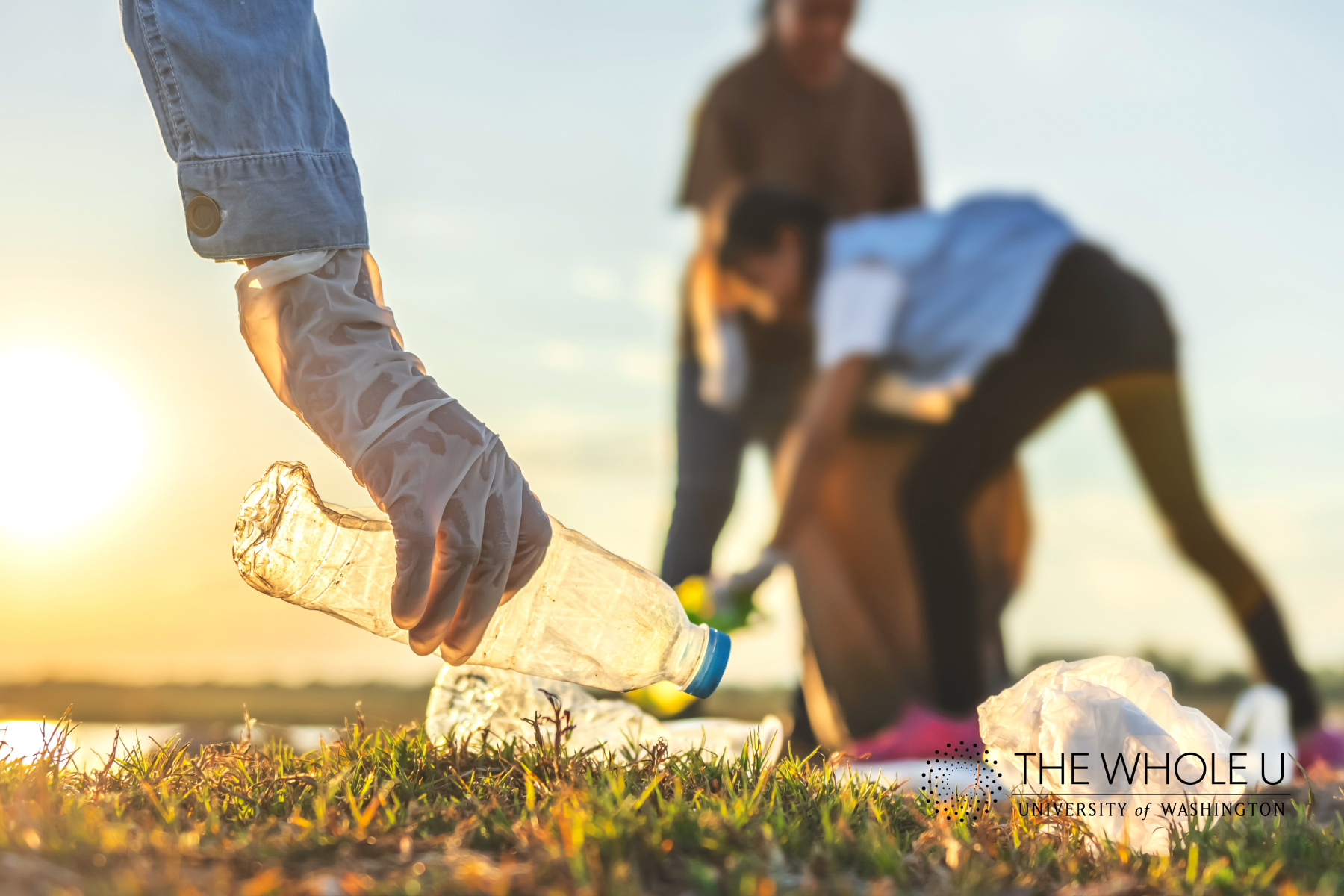
Let’s Talk About Plastic
So much of the material we handle on a daily basis is made of plastic. Let’s delve into some common questions about the puzzling predicament of perplexing plastic!
What does the number in the chasing arrow symbol mean?
Understandably, many people often think that the chasing arrow symbol on a plastic item means that the product is recyclable. However, that’s not always the case. The symbol and the number inside it is called a “resin identification code,” which tells the consumers what kind of plastic was used to make the product. The resin identification code was made in 1988 to help consumers to identify and sort recyclable plastics – back then there were a lot fewer shapes and types of plastic than there are now! Now the number doesn’t give us enough information on if an item can be sorted or recycled effectively due to plastic manufacturing developments so in the City of Seattle, we ignore the number altogether!
How do I properly recycle plastic on the University of Washington campus?
Focus on the shape of the product you are about to throw away! Non-compostable plastic products shaped like bottles, tubs, jugs, and cups can safely go into the recycling bin. Non-compostable plastic clamshells are also allowed in the recycling. Some lids can be recycled, but…

Don’t sweat the small stuff!
Anything that is smaller than three inches (about the size of your index finger) should go into the garbage. Plastic or metal items that are too small can be mistaken as broken glass during the sorting process and contaminate the recyclables. Also…
Keep it clean!
It is important to make sure recyclables are clean, empty, and dry! When the recyclables are food soiled or wet, they will contaminate the rest of the recyclables and reduce the quality or recyclability of the materials. You don’t have to get items clean enough to store food or eat from, just clean enough that liquids or food isn’t getting all over the place – it shouldn’t take much water or time to rinse it or wipe it off before tossing. If a recyclable item cannot be emptied or wiped, then it must be disposed as garbage.
Look out for compostable plastic!
The majority of UW Housing & Food Services (HFS) plastic packaging, including cups & lids, clamshells, utensils and straws are compostable. The plastic is able to be composted becaues it is made from a special corn-based plastic and is tested by composting facilities. Please note that compostable plastic cannot be recycled, just as all other types of plastic cannot be composted. If you’re unsure about which type of plastic you have and cannot find an answer, it is best to throw it in the garbage.
Did you know that all cups, lids & utensils from Starbucks on campus is compostable? We have the only Starbucks in the country were compostable plastic is used!

What about plastic film?
Plastic film includes bubble wrap, grocery bags, shrink wrap and other stretchy, clean and dry soft plastic. Being able to stretch plastic film with your thumb is a good indicator that it is likely recyclable. However, it cannot be recycled in a regular recycling bin; it’s collected separately. To find out what’s accepted and where to take it, check out the Plastic Film Disposal Page.
Simple Ways to Avoid Plastic
- Buy second-hand products to avoid packaging: Instead of buying new products, try shopping at UW Surplus or thrift stores like Goodwill. You can purchase affordable items while reducing waste at the same time!
- Reusable mugs, bottles, and straws – oh my!: Production, transportation, and recycling of bottles and cups takes up a large amount of energy. What’s better than recycling plastic is not to consume them in the first place – and, at UW HFS Cafés, you can even get a discount when you bring your own mug!
- Shop in bulk: Use reusable containers like jars to buy peanut butter, spices or rice from your grocery store – one more way to reduce waste and save money!
- Buy whole, unprocessed foods: The vast majority of our processed foods come in plastic packaging. Choosing produce that isn’t plastic-wrapped, and using reusable bags if needed, can help. Decreasing our consumption of these products is not only good for the planet, but it’s better for our health too!
- Buy items made from natural materials: Wood, metal, glass, cotton, hemp, linen, silk, bamboo, and wool are great alternatives. For example, you can buy glasses instead of plastic cups, buy glass containers instead of plastic Tupperware, buy wool or cotton clothing instead of nylon or polyester, and buy a reusable cotton bag instead of using single use plastic produce bags, and so on!
Have questions about plastic?
Contact UW Recycling at recycle@uw.edu or 206-685-2811. You can also send a direct message on Instagram (@uwrecycling) or Facebook (@UWRecycling).
This article is reposted from UW Sustainability’s “In Our Nature” blog. “In Our Nature” highlights sustainability efforts, events, opportunities and other stories happening across the University of Washington. Visit it at green.uw.edu/blog
2 Thoughts on “Let’s Talk About Plastic”
On July 22, 2020 at 7:35 AM, Bruce Balick said:
Wouldn’t it be appropriate for UW and the PAC12 and other regional universities to market only compostably packaged food products in five years, including potato chip bags and candy wrappers. With our combined purchasing power we could find vendors willing to work with us and our chem engineering researchers. We could also consider drinks into paper cups from pour-a-drink taps. There are many good student projects here!
On July 22, 2020 at 2:24 PM, Golbanoo Ghavami said:
me and some of my friends are trying to less plastic as much for couple of years now. I took a snapshot of this comment and send it to them as well. Just thank you for all your researches and sharing the results with us.
Comments are closed.